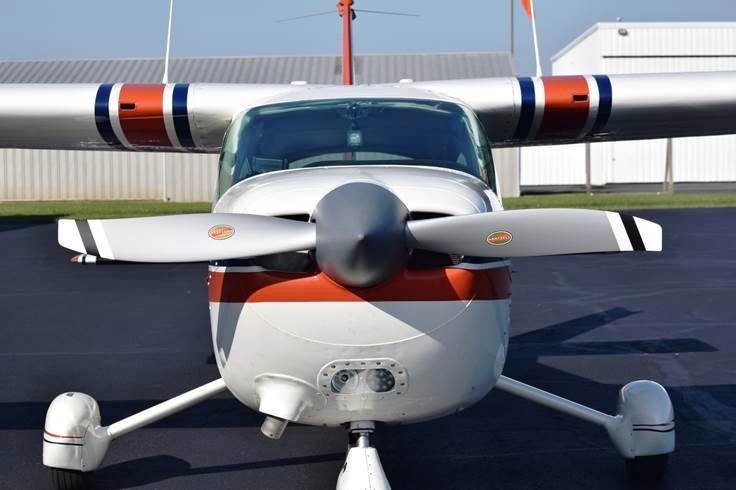
One of the most frequently asked questions we receive at Hartzell is, “Why is the scimitar propeller blade better than a conventional straight blade?”
Scimitar (pronounced si-muh-tr) propellers are so named because they are shaped like the curved, single-edged scimitar swords once used in the Middle East. Beyond their stylish ramp appeal, scimitar propeller blades can offer a number of key benefits.
Let’s take a look at some of the advantages of the scimitar propeller blade shape:

All propellers lose performance as the blade tips approach the speed of sound, due to the formation of sonic shock waves. These shock waves radiate energy, which results in increased drag on the aircraft. Just as swept wings prevent drag, so do swept-back scimitar blades. The curved shape of scimitar propellers helps to minimize the strength of the sonic shock wave formation, providing optimal performance at higher power and RPMs.
Running blade tips near the speed of sound is also the source of most of the propeller noise, which is a growing concern at airports and backcountry locations. Pilots everywhere are looking to reduce their noise signature without compromising performance. By reducing the magnitude of shock waves, swept-tip scimitar props reduce noise pollution.

Propeller design plays a key role in the fuel efficiency of an aircraft. With their enhanced aerodynamic design, scimitar blades may improve efficiency over conventional straight blades, potentially helping pilots save on flying costs.
At Hartzell Propeller, our expert engineers seek maximum performance while meeting limits on diameter, weight, strength, and noise. Our advanced swept-tip scimitar prop design, in combination with our blended airfoil technology, can provide significant reductions in noise and increased performance, not to mention improved aesthetics.
Do you have a question for the Hartzell Propeller team? Let us know! Fill out our contact form or reach out on Facebook, Twitter, or Instagram.